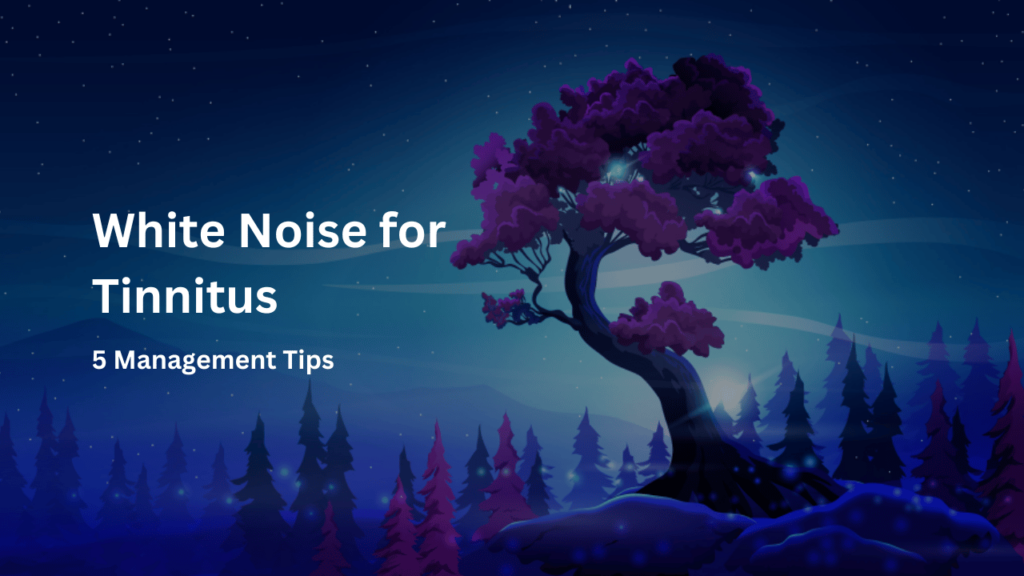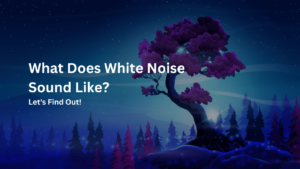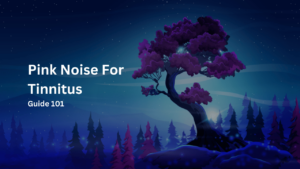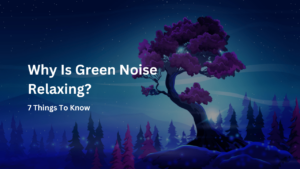The perception of noise or ringing in the ears in the absence of external sound is commonly know as Tinnitus.
While the condition varies in severity, it can significantly impact quality of life, leading to concentration difficulties, sleep disturbances, and emotional distress.
Among the various management strategies, white noise has emerged as a particularly effective tool for many individuals.
This article explores the role of white noise in managing tinnitus, supported by insights into its benefits, how it works, and practical tips for incorporating it into daily life.

Understanding White Noise
White noise is a sound that contains every frequency within the range of human hearing, typically between 20 Hz and 20 kHz, in equal measure.
It’s akin to a steady “shhh” sound, similar to a running fan or a radio tuned to static.
This consistent sound can mask or blend background noises, making it a popular choice for improving concentration and sleep.
The Science Behind White Noise and Tinnitus
The effectiveness of white noise for tinnitus management lies in its ability to mask or divert attention from the internal sounds of tinnitus. Here’s how it works:
Sound Masking
White noise can cover the sounds of tinnitus, making them less noticeable. This masking effect can provide immediate relief for individuals, especially in quiet environments where tinnitus sounds are more pronounced.
Habituation
Over time, regular exposure to white noise can help the brain become accustomed to tinnitus sounds, a process known as habituation. This can reduce the perceived intensity of tinnitus and the distress it causes.
Improved Sleep
Tinnitus can disrupt sleep patterns, making it hard to fall asleep or stay asleep. White noise creates a consistent auditory backdrop that can help mask tinnitus sounds, promoting better sleep quality.
Enhanced Concentration
For those whose tinnitus interferes with concentration, white noise can help by masking the distracting sounds of tinnitus, allowing for better focus on tasks or activities.
Implementing White Noise in Tinnitus Management
Incorporating white noise into your tinnitus management strategy can be done in several ways:
White Noise Machines
These devices produce a range of sounds, from traditional white noise to natural sounds like rain or ocean waves. They can be particularly useful at night or during periods of quiet to mask tinnitus sounds.
Mobile Apps
Numerous apps are available that generate white noise or other soothing sounds. These can be especially convenient for use throughout the day or while travelling.
Ear-level Sound Generators
For individuals with hearing loss, ear-level sound generators combined with hearing aids can provide both amplification and white noise. This dual approach can be highly effective in curing tinnitus at home.
Creating a White Noise Environment
Simple methods, like running a fan or a low-volume radio tuned to static, can also create a white noise environment conducive to masking tinnitus sounds.
Considerations and Cautions
While white noise is beneficial for many, it’s essential to personalise its use. Volume levels should be comfortable and not exacerbate tinnitus or hearing. Consulting with a healthcare professional or audiologist can provide guidance tailored to your specific condition and needs.
Frequently Asked Questions (FAQs)
Q1: Is there a noise that cancels tinnitus?
Ans: Masking devices and noise generators can help cancel out the sounds of tinnitus by emitting gentle background sounds like white noise, pink noise, or customized acoustic stimulus.
Q2: What color noise is best for tinnitus?
Ans: Many find white noise or pink noise to be effective, as they can mask tinnitus at a wide range of frequencies. Brown noise or blue noise may also work well. It’s individualized.
Q3: What do the Chinese do for tinnitus?
Ans: Traditional Chinese approaches involve acupuncture, herbal remedies, cupping, tai chi, and dietary changes to treat underlying conditions contributing to tinnitus.
Q4: How long should you listen to white noise for tinnitus?
Ans: Recommendations vary, but many experts suggest using white noise for 30 minutes to a few hours at a time, once or twice daily. Take occasional breaks. Don’t play it loudly.
Q5: Why does white noise block tinnitus?
Ans: White noise has a mix of sound frequencies that can mask and distract the brain from focusing on tinnitus noises, providing temporary relief by covering up the phantom sounds.
Conclusion
White noise offers a simple yet effective tool for managing tinnitus, providing relief and improving daily life for those affected by the condition.
By masking tinnitus sounds, promoting habituation, and aiding in concentration and sleep, white noise can be a valuable component of a comprehensive tinnitus management strategy.
As with any treatment, individual experiences may vary, and professional guidance is recommended to ensure the most effective use of white noise in tinnitus care.



